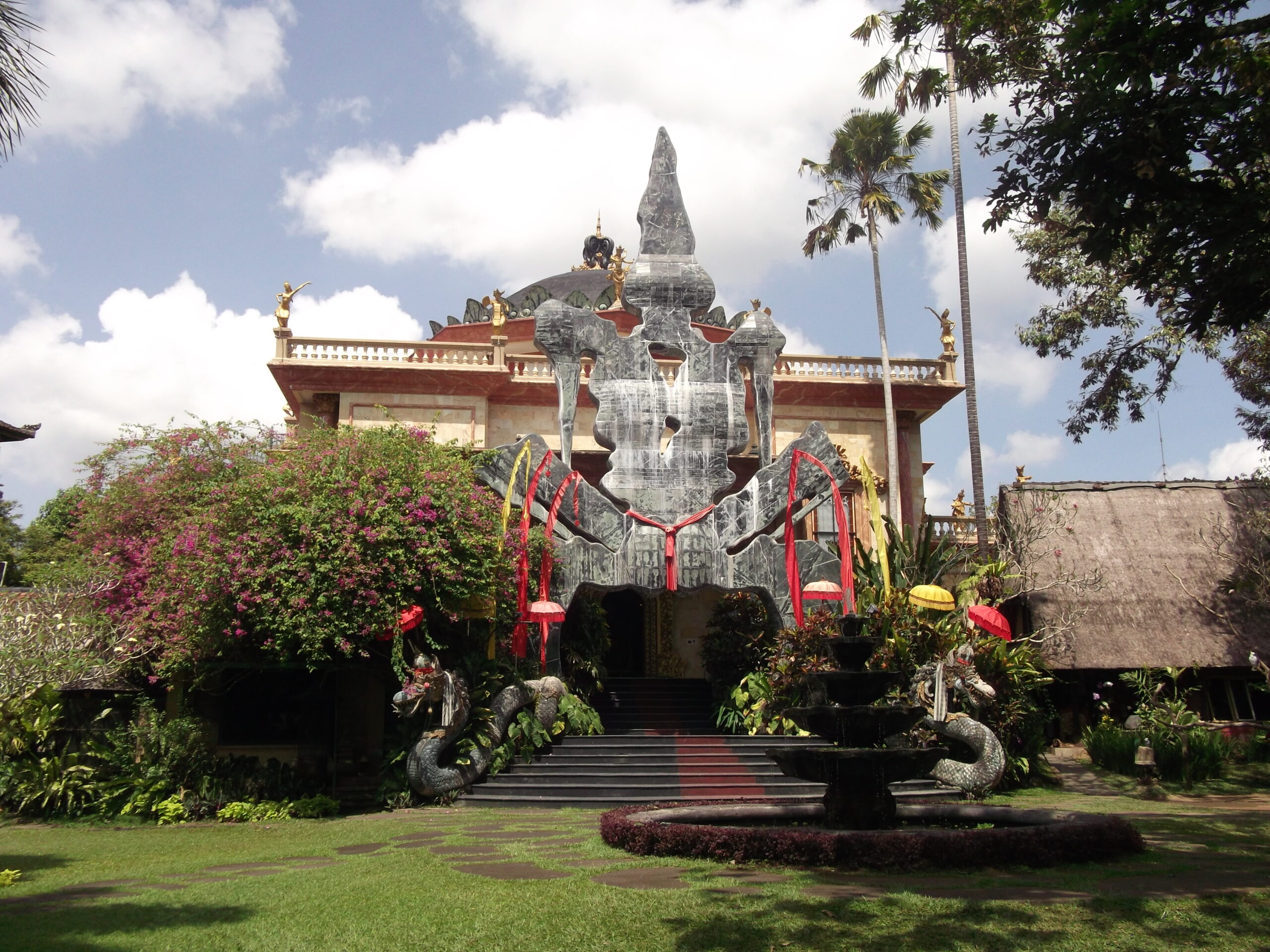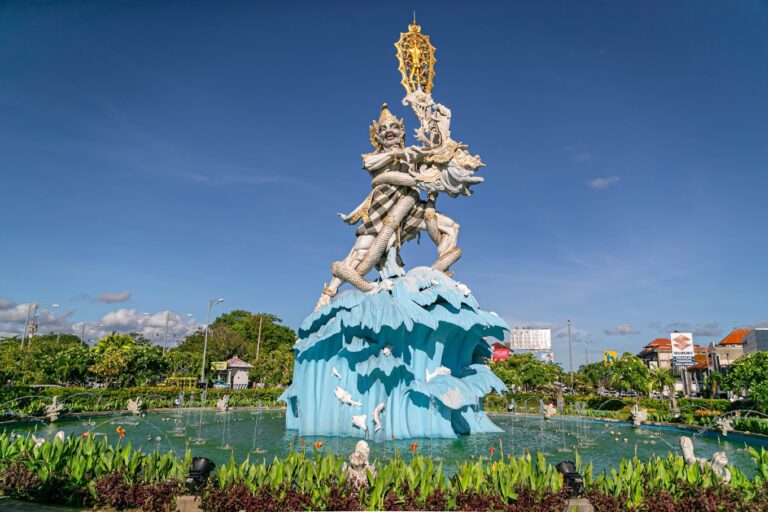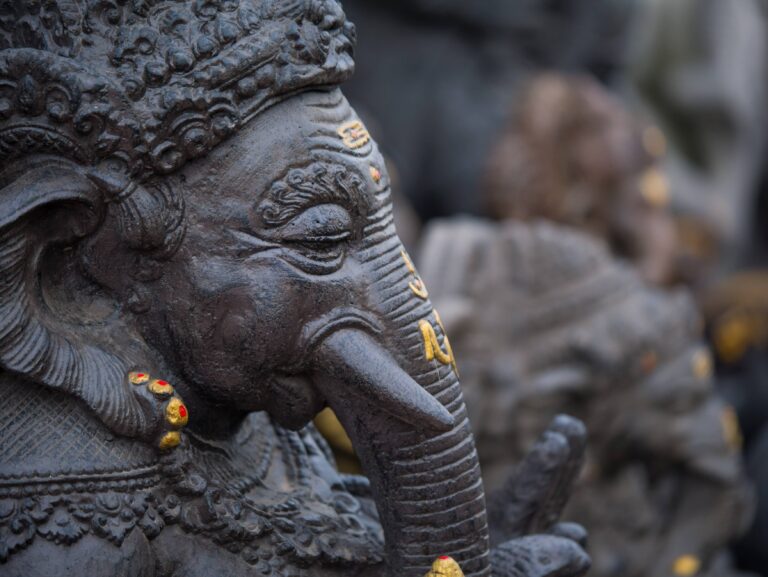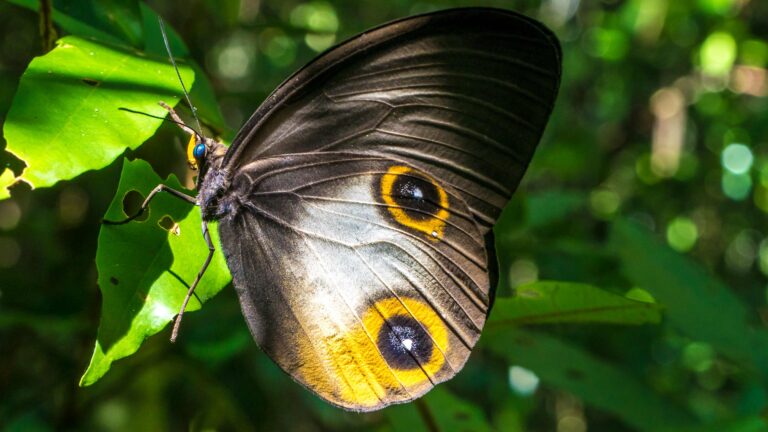Perched above the Campuan River in Ubud, the Blanco Renaissance Museum is one of Bali’s most fascinating cultural landmarks.
Once the former home and studio of Don Antonio Blanco, a Spanish-born artist who settled in Bali in the 1950s, the museum now opens its flamboyant doors to travellers from all over the world. Inside, you’ll find a striking mix of romantic paintings, personal artefacts, and the artist’s original studio, still preserved as it was.
Beyond the artwork, the grounds themselves are worth exploring, with lush gardens, intricate carvings, and exotic birds adding to the experience. Whether you’re an art lover or simply curious, this museum offers a unique look into Blanco’s life and legacy while giving you the chance to slow down and savour the creative spirit of Ubud.
Where Is The Blanco Renaissance Museum?
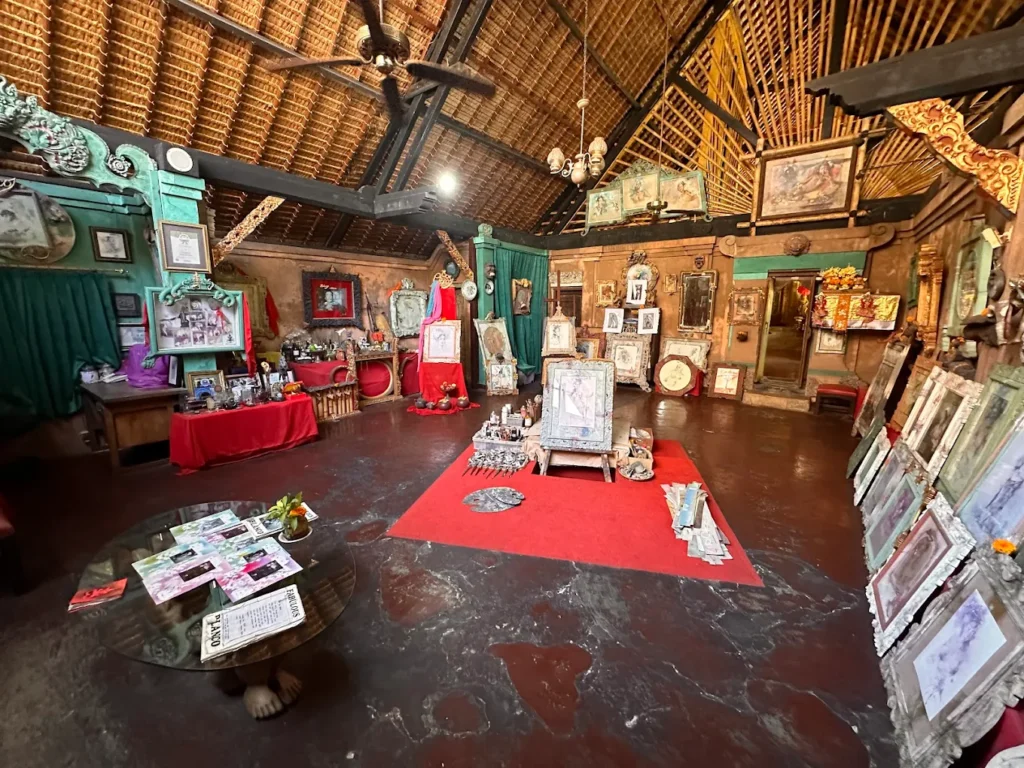
Tucked into the verdant hills of Ubud, the Blanco Renaissance Museum sits on Jalan Raya Campuhan, on the mountain overlooking the tranquil Campuhan Ridge Walk. It’s easy to spot thanks to its flamboyant building and soaring stone dragons that guard the entrance.
Address: Jl. Raya Campuhan, Sayan, Kecamatan Ubud, Kabupaten Gianyar, Bali 80571, Indonesia
How to Get There
Getting to the Blanco Renaissance Museum is straightforward from anywhere in Ubud or the surrounding areas.
- Taxi Hailing App – The easiest option is to book a Grab or Gojek. It’s cheap, reliable, and works from anywhere in Ubud or nearby villages. If you’re coming from central Ubud, the ride is just 10 to 15 minutes, giving you plenty of time to enjoy the scenery along the way.
- Private Car & Driver – If you want a more relaxed trip, consider hiring a private car and driver. This is especially handy if you’re planning to combine the museum with other attractions in Ubud. Your driver can wait while you explore, keep an eye on your belongings, and handle the tricky roads for you.
- Walking – For those staying nearby, it’s possible to walk to the museum. The route takes you along quiet streets and offers a pleasant glimpse of local Balinese life, with lush greenery and traditional architecture along the way.
- Motorcycle or Scooter Hire – While riding a scooter might seem tempting, it’s not recommended for most visitors. Bali’s roads can be challenging, and unless you’re fully insured and experienced, it’s easy to get into trouble with the law or your travel insurance.
Is There An Entrance Fee To The Blanco Renaissance Museum?
Yes, there is a small entrance fee to the Blanco Museum. When we went, the price was 100k IDR per person, but of course, this is subject to change, so if you’re unsure, then check online 1st.
Be sure to bring cash, places like this always prefer cash in Bali. The small fee helps with the maintenance of the museum house and the exhibits inside, and it’s a win, really, because the ticket includes a welcome drink at the museum’s café!
When Is The Best Time To Visit The Blanco Renaissance Museum?
The museum is open daily from 9 am to 5 pm.
If you want a more relaxed visit, try going mid-morning, a little after it opens. The crowds are usually lighter, the temperature is comfortable, and it’s a great time to wander through the lush gardens and enjoy the artwork without feeling rushed.
What To Expect At The Blanco Renaissance Museum
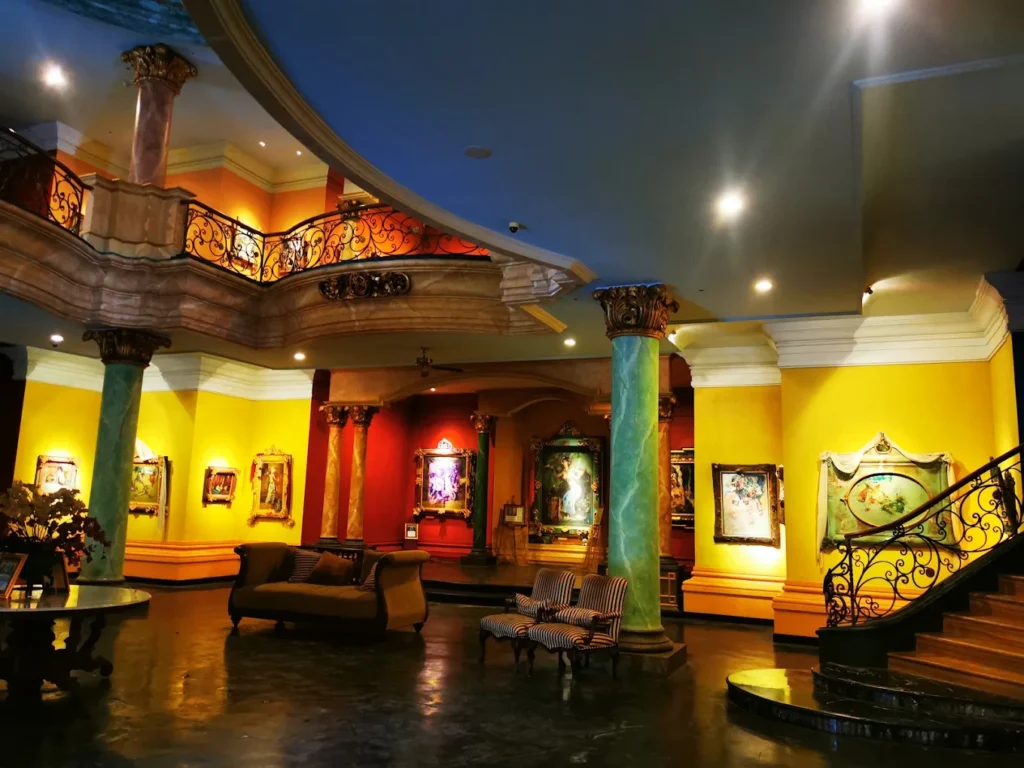
When you step through the grand green marble archway flanked by massive mythical stone dragons, you enter a world where imagination and tradition meet. The main building itself is a work of art, with sunlight streaming through a stained-glass dome, ornate pillars, wrought iron staircases, and an interior that exudes rococo opulence.
The museum showcases Balinese architecture imbued with Spanish flair, creating a unique and whimsical atmosphere. Inside, you will find over 300 paintings tracing Antonio Blanco’s artistic journey, from realistic depictions to expressive, dreamlike scenes of Balinese women.
The museum also houses several Blanco lithographs, collages, illustrated poetry, and personal objects, giving visitors a rare glimpse into Antonio Blanco’s creative world. |
Blanco’s original studio remains undisturbed, complete with a sunken easel and an unfinished painting.
A personal tour can highlight his most fascinating pieces, including delicate flower motifs and compositions that demonstrate his unique blend of Balinese and international influences.
Outside, the gardens are dotted with exotic birds, delicate palms, sculptures, and statues of deities, blending artistry and nature. The museum’s café and gift shop provide perfect spots to pause and reflect or pick up a keepsake from your visit.
The Family Temple
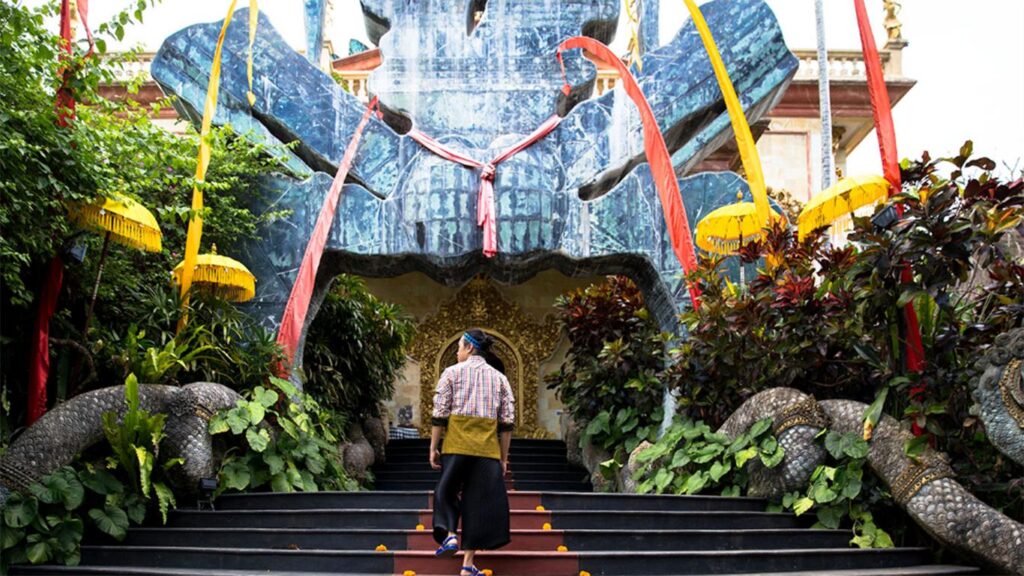
Nestled within the museum grounds, the family temple is a quiet, sacred space that reflects the spiritual side of Antonio Blanco’s life. The temple is still used for ceremonies, with locals and the Blanco family offering prayers and palm leaf offerings.
Visitors can admire the intricate stone carvings, delicate flower decorations, and the serene layout, which contrasts beautifully with the flamboyant style of the main building. It’s a small but meaningful part of the museum experience, giving a glimpse into the spiritual and cultural traditions that influenced Blanco’s art.
A visit to the family temple is a chance to slow down, reflect, and appreciate the balance of art, life, and devotion that defines the Blanco Museum.
About Antonio Blanco
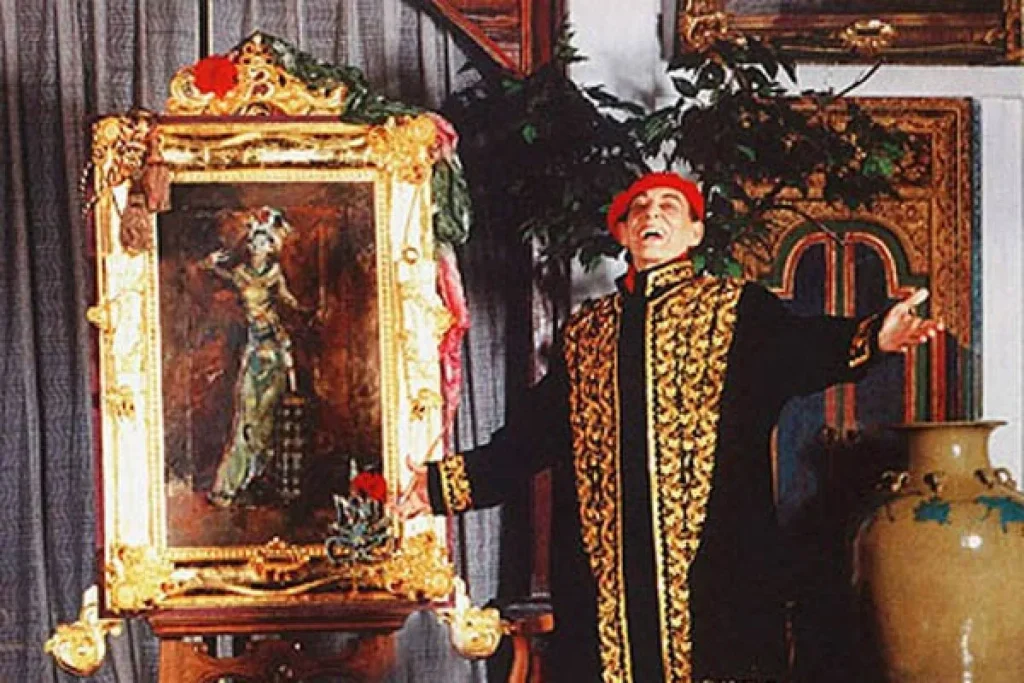
Antonio Blanco was born on September 15, 1912, in Manila, Philippines, to Spanish parents. He moved to Bali in 1952 and was instantly captivated by the island, its people, and its culture, which inspired much of his work.
Blanco married Ni Ronji, a Balinese dancer who often modelled for his paintings, and together they built a life full of art and colour.
Often called the “Dali of Bali,” he could speak six languages but famously struggled with scientific subjects. His son, Mario, grew up surrounded by creativity, witnessing firsthand the daily life of one of Bali’s most flamboyant and unconventional artists.
Blanco’s work is celebrated for its romantic and dramatic style, particularly expressive portraits of Balinese women. The museum now preserves an extensive collection of his paintings, several Blanco lithographs, collages, and personal objects, giving a vivid glimpse into Antonio Blanco’s life and artistic legacy.
FAQs
Are There Other Works By The Blanco Family In Bali?
Yes, the Blanco family has contributed to several other projects and exhibitions across Bali. While the Blanco Museum in Ubud remains the main attraction, you can find works by family members in smaller galleries, private collections, and occasional exhibitions.
Visiting these offers a broader sense of how the family has continued Antonio Blanco’s artistic legacy, blending Balinese culture with their own creative interpretations.
What Is The Agung Rai Museum?
The Agung Rai Museum is another must-visit art museum in Ubud. Unlike the Blanco Renaissance Museum, which focuses on one artist, Agung Rai showcases a wider range of Balinese art, including paintings, textiles, and carvings.
Many visitors like to see both museums in one day, as it gives a rich comparison between Blanco’s flamboyant, personal style and the broader traditions of Balinese artistry.
What Can I Find In The Gift Shop?
The museum’s gift shop is a highlight for many visitors. It has prints of Blanco’s paintings, books on his life and career, and unique souvenirs for sale.
From Blanco lithographs to small keepsakes, there’s something for all budgets. It’s a great way to take a piece of the museum home and remember your visit. Even a quick stop in the shop adds a little extra to your Blanco experience.
Can I Take Photos Inside The Museum?
Photography isn’t allowed inside the gallery itself, as flashes and camera lights can damage delicate artworks. But you’re free to take photos around the grounds.
Most visitors love snapping the gardens, the colourful parrots, and the ornate entranceway, so you’ll still come away with plenty of memorable shots.
Can I See The Blancos’ Studio?
Yes, one of the highlights of the Blanco Museum is that the artist’s studio remains undisturbed. Visitors can step inside and see the space just as Antonio Blanco left it, complete with a sunken easel, unfinished paintings, and personal objects.
Spending time here offers a rare glimpse into his creative world. You can get a sense of how he worked, what inspired his compositions, and the daily rhythm of a life devoted to art. The studio is a must-see for anyone hoping to connect more deeply with Blanco’s vision and the stories behind his art.
Who Is Mario Blanco?
Mario Blanco is the son of Antonio Blanco and has grown up surrounded by art and creativity.
While he has followed his own path, he remains closely connected to the museum and his father’s legacy.
Visitors often enjoy hearing stories about Mario’s role in preserving the collection and supporting exhibitions, giving a personal insight into the Blanco family and how the artistic spirit continues to influence life at the museum today.
What Makes The Museum’s Collection So Interesting?
The Blanco Museum houses an interesting collection that spans more than just paintings. Visitors can explore Indonesian artefacts, collages, illustrated poetry, and personal objects that reflect both local culture and Blanco’s own flamboyant style.
From dramatic portraits of women to several Blanco litographs and delicate flower motifs, the museum offers a rare insight into the artist’s creative mind. The combination of art, architecture, and the museum’s lush gardens makes the experience immersive, giving visitors a unique perspective on both Blanco’s work and the broader Indonesian artistic landscape.
Why Do Visitors Love Don Antonio Blanco?
Visitors are drawn to the museum not just for the art, but for the story behind it. Don Antonio Blanco’s life was full of creativity, passion, and a sense of theatre that comes through in everything on display. People often remark on the vivid colours, bold compositions, and the energy that seems to fill the museum.
Even beyond his paintings, guests enjoy hearing anecdotes about his life, his relationships, and the way he engaged with the local community. Spending time at the museum gives a deeper appreciation of the man himself, making the visit memorable long after you leave.
Final Thoughts On The Blanco Renaissance Museum
If you’re looking to savour Balinese life through a lens that’s equal parts fantasy and devotion, this museum is a must-visit destination in Ubud.
It’s not just a museum, it’s the old home and studio of a successful artist whose paintings and lithographs tell a vivid story of love, culture, and artistic daring.
Whether you’re lured by the lush gardens, the family temple, or simply stepping into a world where art and architecture clash beautifully, the Blanco Renaissance Museum delivers a memorable experience.
Enjoy the drink included with your entrance fee, stroll among intricate carvings, and pause where women wander with palm leaf offerings, all while getting a rare peek into Blanco’s life and legacy.

